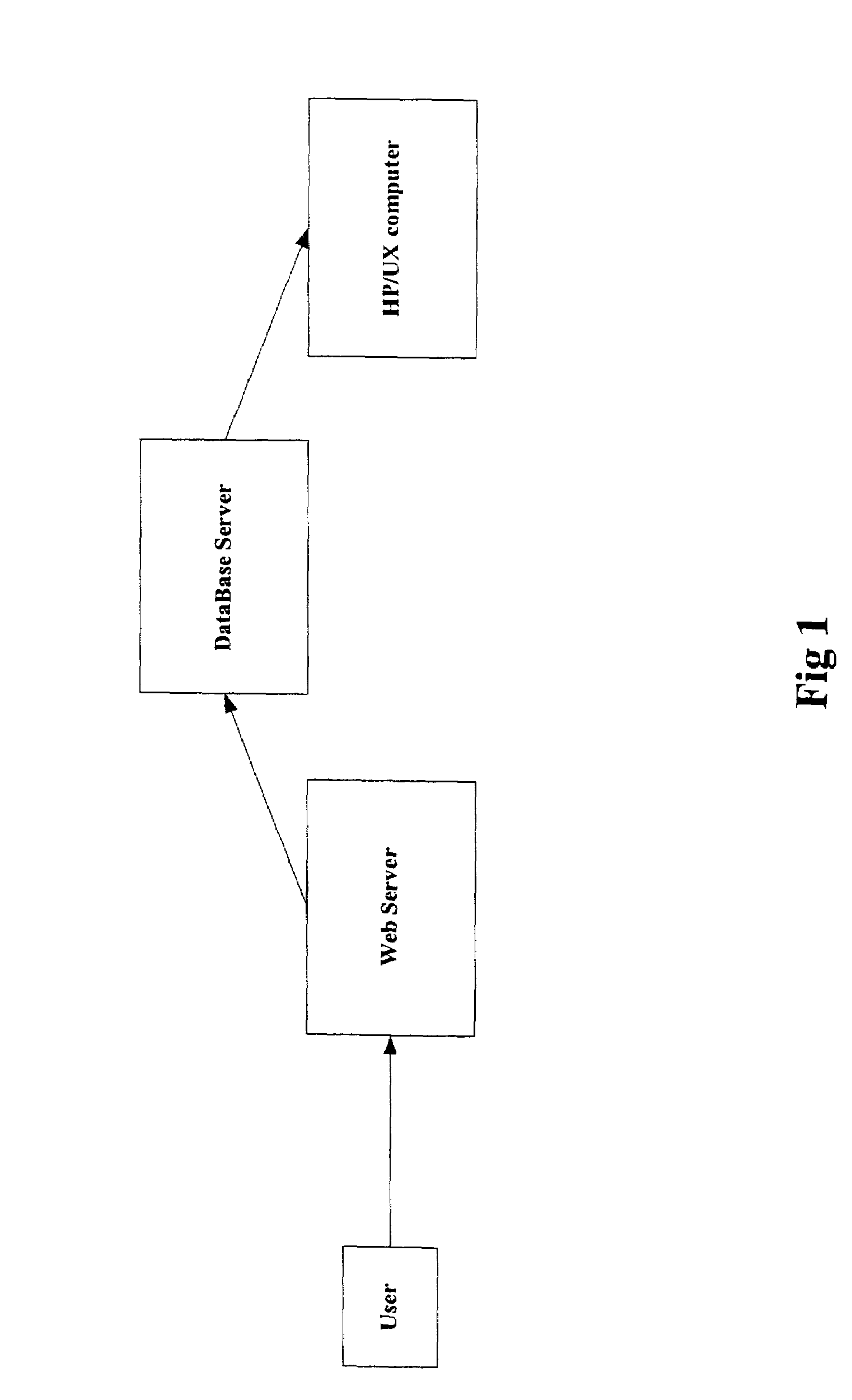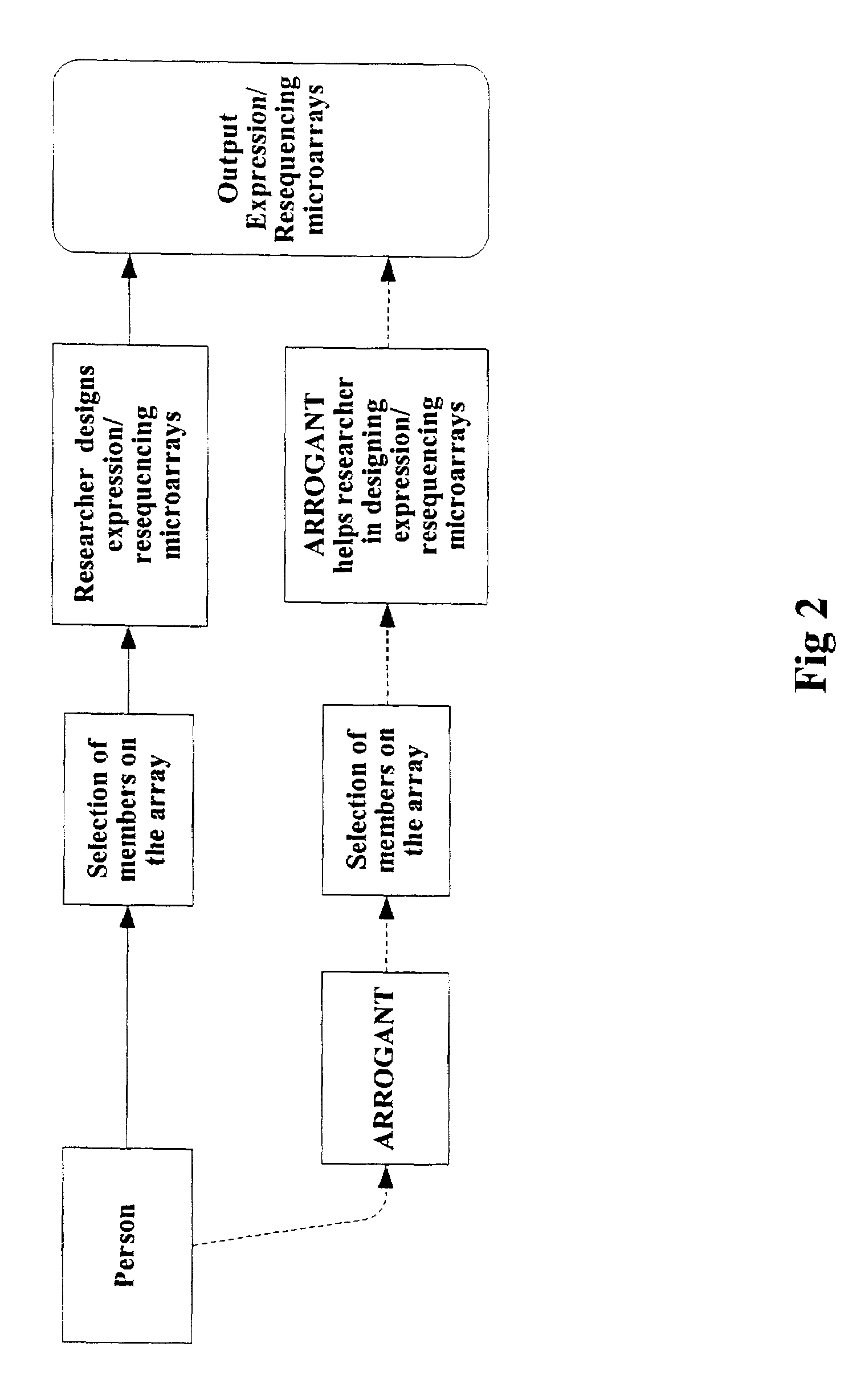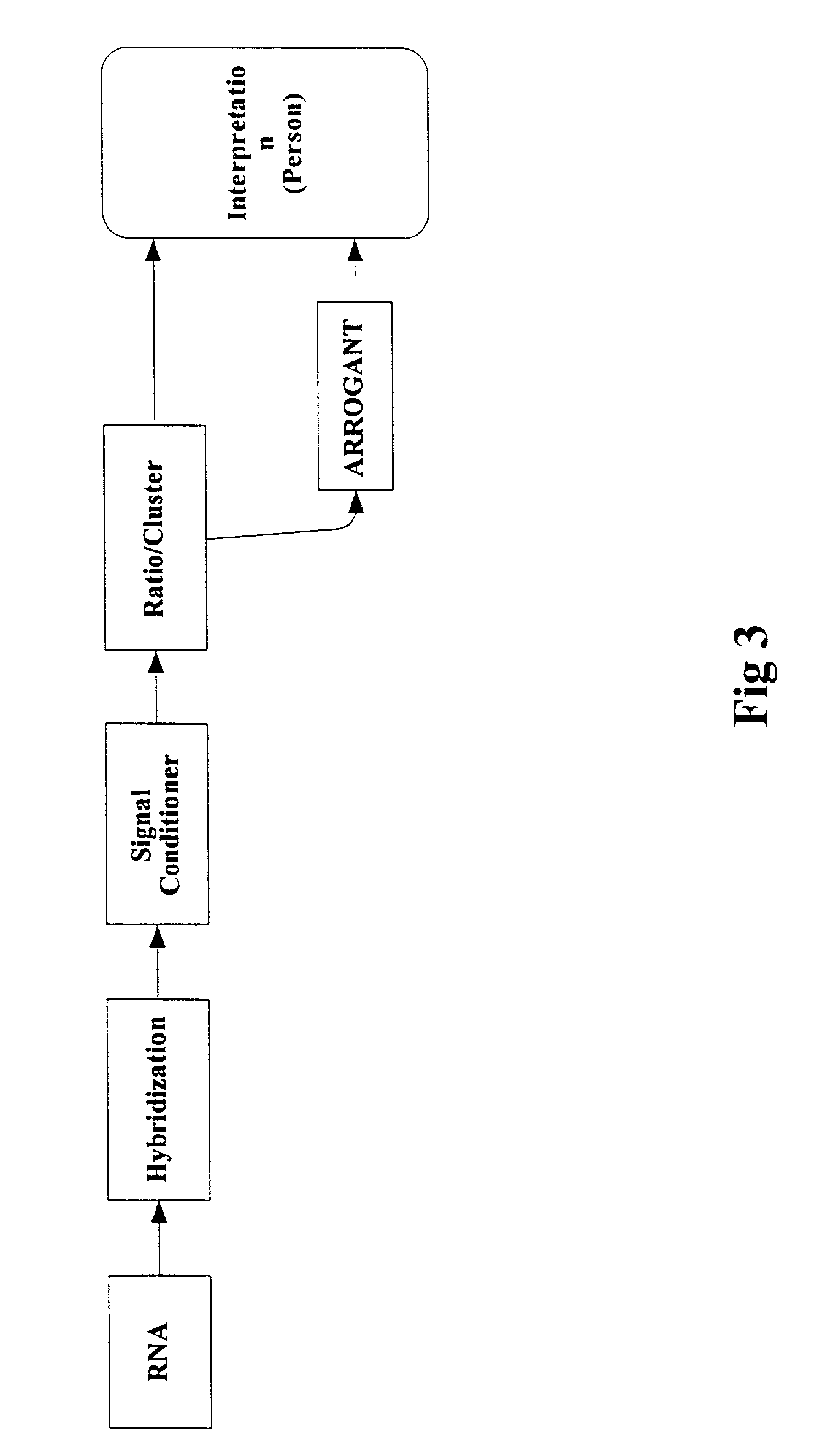Computer-based method for creating collections of sequences from a dataset of sequence identifiers corresponding to natural complex biopolymer sequences and linked to corresponding annotations
a biopolymer sequence and sequence identifier technology, applied in the field of computational design and analysis of arrays of genomic data and products, can solve the problems of manual elimination of redundancy, laborious and time-consuming task, and researcher's need to look up individual genes, so as to facilitate the design of expression/resequencing microarrays, eliminate sequence redundancy and duplicates, and facilitate identification, analysis and comparison
- Summary
- Abstract
- Description
- Claims
- Application Information
AI Technical Summary
Benefits of technology
Problems solved by technology
Method used
Image
Examples
example
[0104]This design, comparison and analysis modes described above have been implemented in the computer tool known as ARROGANT. ARROGANT, in one integrated package, assists in compiling a gene collection starting from keywords and their synonyms, designs primers, looks for commercially available clones and designs probes for resequencing. Its focus is to enable the researcher to simultaneously work with a large collection of genes, their information and experimental data. Once a gene collection has been refined by the researcher (the design mode), ARROGANT then annotates the collection from many databases (the annotation mode). Experimental data can then be analyzed by association with this information (sequence annotations, pathways, homology, artifacts etc.) to aid in drawing scientific conclusions. In a large gene collection, sequence redundancies and naming differences can be resolved by ARROGANT (the collection comparison mode). ARROGANT calls upon the resources of several compu...
PUM
 Login to View More
Login to View More Abstract
Description
Claims
Application Information
 Login to View More
Login to View More - R&D
- Intellectual Property
- Life Sciences
- Materials
- Tech Scout
- Unparalleled Data Quality
- Higher Quality Content
- 60% Fewer Hallucinations
Browse by: Latest US Patents, China's latest patents, Technical Efficacy Thesaurus, Application Domain, Technology Topic, Popular Technical Reports.
© 2025 PatSnap. All rights reserved.Legal|Privacy policy|Modern Slavery Act Transparency Statement|Sitemap|About US| Contact US: help@patsnap.com



